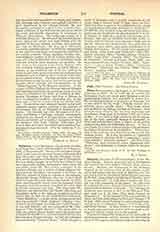

Funchal, Diocese of (FUNCHALENSIS), in the Madeira Islands. Both in neo-Latin and in Portuguese the name of the town signifies “fennel” (Lat. fcenicularium). Madeira, the Purpuraria of the Romans, situated in the extreme west of the ancient world, about 440 miles from the coast of Morocco, was discovered in 1344 by the famous Bristol lovers (Amantes de Bristol), Anna Dorset and Robert O’Machin; later it was abandoned. In 1419 Joan Goncales and Tristan Vaz took possession of the island. In 1445 were first planted the vines (brought from Crete) that have since rendered Madeira so famous. The Christian inhabitants were subject at first to the Bishop of Tangier, until Leo X (June 16, 1514) made Funchal an episcopal see. In the interest of the vast territories in Africa and Asia then subject to Portugal, Clement VII (July 8, 1539) raised Funchal to archiepiscopal rank, and gave it for suffragans Angra, Cabo Verde, Goa, and Santo Thorne. In 1551, however, it was reduced to simple episcopal rank, and in 1570 was made a suffragan of Lisbon, which it is to the present.
Funchal is delightfully situated on the south side of the Madeira Islands, and was therefore the first halting place for Portuguese and Spanish ships on their way to the New World. Owing to this natural advantage the island soon became a great center of wealth and foreign trade, likewise an important center for the spread of the Gospel whose missionaries found the islands convenient as a resting-place going and coming. Funchal was once to the Portuguese what Gibraltar, St. Helena, and Malta now are to the English. Therefore they garrisoned the city, though naturally defended by its rugged cliffs, and built there four impregnable fortresses. Its churches and monasteries no longer exhibit their former architectural splendor, though, as late as the beginning of the nineteenth century, the lintels and jambs of the windows in many houses were of massive silver, and the church vessels of solid gold (chalices, pyxes, monstrances) were thickly studded with pearls, diamonds, and other precious stones. Funchal has long been a favorite resort of invalids, especially those suffering from diseases of the lungs. Its white villas and edifices, embowered in rich tropical vegetation, charm the traveller as he approaches from the sea. The roads and streets are quite steep and the usual means of transportation is by ox-sled. The population of the city is (1909) about 20,000. According to the “Annuaire Pontifical” for 1906, the diocese contains about 150,000 Catholics, with 50 parish churches, 80 public and two conventual chapels, all ministered to by 93 priests.
F. FITA

